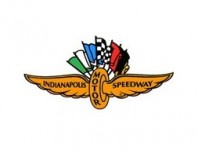Great Indy innovation
Automobile innovations: rearview mirror, diesel engine turbocharger, seat belt, car heater
Since the first Indianapolis 500 at the Brickyard in 1911, there’s been a never-ending chase to increase the speed and efficiency of the cars circling the 2-1/2-mile oval.
The need for speed has led to innovations like the seat belt, rearview mirror and diesel engine turbocharger that all made their way to automobile showrooms worldwide.
• Ray Harroun stirred controversy in the inaugural Indy 500 by entering a single-seat car, the Marmon Wasp. His competitors, each of whom had a mechanic/spotter riding shotgun, knew that, by motoring solo, Harroun would have an edge in weight and aerodynamics.
They complained that he would be blind to racers closing in from behind and thus be a hazard to all.
Harroun proposed a rectangular mirror mounted on his car with four steel dowels. He won the race and, by 1915, the device—marketed as a “mirrorscope” or “cop-spotter”—was a popular aftermarket accessory.
• Turbochargers evolved from blowers used to stoke blast furnaces, but didn’t catch on in the auto industry until Mercedes sent a team of turbocharged cars to Indianapolis in 1923.
The German cars were also-rans, but the underlying idea—that pumping air into an engine’s intake manifold boosts power—inspired Fred Duesenberg. His operation moved from Auburn to Indianapolis in 1919 to develop a centrifugal turbocharger for the 1924 race. Duesenberg’s car won, and the technology quickly moved into the mainstream.
Meanwhile, Columbus-based Cummins Engine Co. Inc. helped develop a variation on the technology that was found in ships, airplanes and locomotives. That technology debuted at Indy in the Cummins Diesel Special of 1952, a car that ran at record speeds.
• Many fatalities during the Speedway’s early years came when drivers were ejected from vehicles. In 1922, Barney Oldfield ordered a harness for his car from a parachute manufacturer—and became the first driver to install a seat belt. It took a while for Oldfield’s idea to catch on. Wisconsin-based Nash Motor Co., which had a plant in Indianapolis, offered factory-installed seat belts in 1949, and the Big Four made front-seat belts standard in 1964.
• In 1938, Nash introduced a conditioned air-heating/ventilating system. This was the first hot-water car heater to draw fresh air from outside, and is the basis of all modern car heaters. The invention was an outgrowth of a Nash division that made high-end refrigerators and kitchen appliances.
The Jaws of Life were invented by George Hurst, who was a mechanical engineer and auto racing enthusiast. He conceived the idea after witnessing an accident at the Indy 500 where the driver died because he couldn’t be extracted from his car in time.
https://en.wikipedia.org/wiki/SAFER_barrier
The Steel and Foam Energy Reduction (SAFER) Barrier, sometimes generically referred to as a soft wall, is a technology found primarily on oval automobile race tracks intended to absorb and reduce kinetic energy during the impact of an accident, and thus, lessen injuries sustained to drivers. It was designed by a team of engineers led by Dr Dean Sicking at the Midwest Roadside Safety Facility at the University of Nebraska-Lincoln. It was developed from 1998-2002, and first installed at the Indianapolis Motor Speedway in May 2002.








 Reply With Quote
Reply With Quote